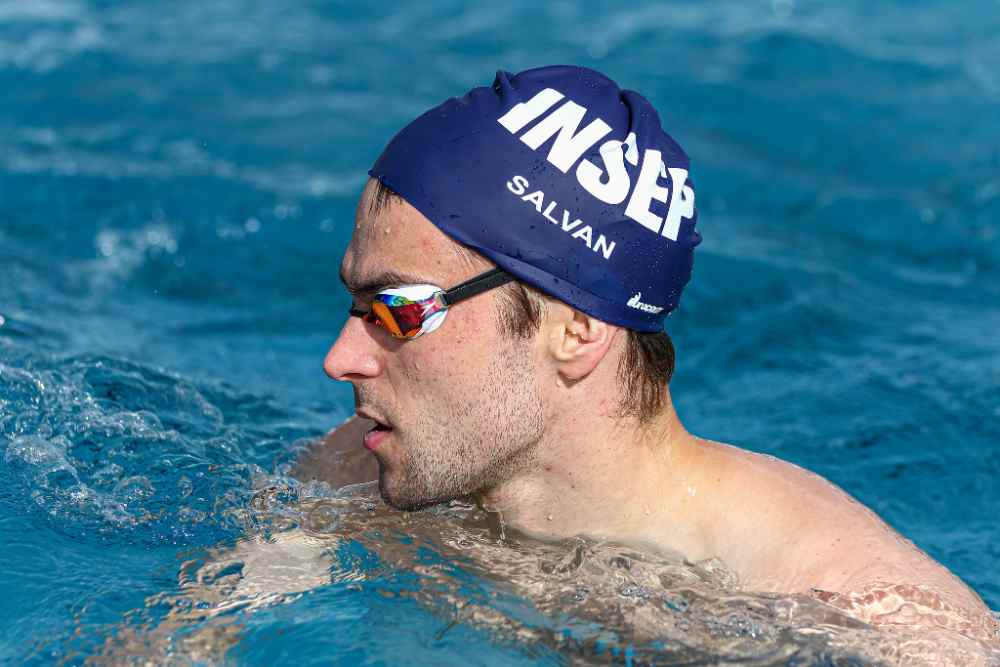If you keep losing or damaging your swim goggles, here are some tips to keep them in good condition.
Before storing your swim goggles, remove the strap. Find a bowl large enough to submerge your goggles. Fill it halfway with water and add 5 tablespoons of white vinegar. Submerge your goggles, swim mask, and lenses, and let them soak for at least 2 hours.
Then, rinse with clean water and let them air dry.
Here’s how to store your swim goggles properly step by step.
Air drying
After you’re finished swimming, you should take some time to air-dry your swim goggles. It is important to rinse them with fresh water and let them dry completely, so they’re less likely to be affected by moisture or mildew. This is also good practice to prolong the lifespan of the built-in anti-fog protection. Once they’re dry, you should store them in a protective case. This will prevent scratches on your expensive goggles during storage.
Another way to prevent fogging swim goggles is to use an anti-fog spray. Spray your goggles with the anti-fog spray, then rinse them thoroughly with pool or fresh water. Remember, not to touch the inside lens. Doing this will prevent condensation and help your goggles last longer. Using the anti-fog spray will also help prevent fogging, but it is not a permanent solution.
Avoiding direct sunlight
Store your swim goggles in their protective cases after using them. This will protect them from scratches and other outside factors. Avoid placing your swim goggles in direct sunlight or in a humid environment. If possible, store them in an airtight container that is away from direct sunlight. If you’re unable to store your swim goggles in a proper storage case, try using a reusable bag.
Store your goggles in a dry environment when not in use. The moisture can damage the anti-fog coating on the lenses. If you don’t take care of your swim goggles, they can develop mold and other bacteria. The American Academy of Dermatology recommends that you apply sunscreen after you get out of the water to prevent this. Avoid storing your swim goggles in direct sunlight, since direct sunlight can cause damage to the anti-fog coating.
Avoiding hot water
While swimming, your goggles will often become wet. To prevent this, you should always rinse them well with warm water before storing. Also, avoid storing them in hot water or direct sunlight as the hot water can melt the gaskets in your goggles and cause the lenses to detach prematurely. Store your goggles in a cool, dry, and protected location. It may help to put them in a case that you can use again. You should also avoid storing them in an area where they will get exposed to chemicals and aerosol spray. Petroleum-based substances and aerosol propellants can degrade rubber in goggles, so store them in a place that is not exposed to these materials.
Another great way to keep your goggles clean is by cleaning them with a baby shampoo solution. This solution is much gentler on your eyes than regular detergent, and it will also keep them from misting up. After using this solution, you can rinse the goggles in cold water and let them air dry. To remove fog, some swimmers use a technique known as sloshing. This technique helps prevent fogging, but it distracts swimmers from their workout.
Cleaning anti-fog coating
Before using your swimming goggles, make sure you clean them thoroughly. If you’ve been using them for a long time, the anti-fog coating on the lens could be damaged if you touch it. Use an abrasive cloth or microfiber to clean the lenses. You’ll want to avoid soap as this will damage the anti-fog coating. Keeping your goggles clean is very important to extend their usefulness.
See also: The Best Antifog Swim Goggles for Lap Swimming
Regularly cleaning your swim goggles will improve their performance and durability. It’s also a good idea to keep them out of reach of curious hands. If you’ve got kids, you can rinse them in cold water to prevent them from forming a film on them. Never throw wet goggles into your swim bag, as the water will attract bacteria and mold. You can also rinse them with cold water if you’re able to find a clean spot.
Cleaning polarized lenses
To clean polarized lenses, follow these simple steps. Do not rub the lenses with your fingers, as this can cause debris to build up on the lenses. Similarly, avoid scrubbing your goggles as this can cause scratches or even damage to the membrane coating. Instead, use a microfiber lint-free cloth to clean them. Avoid the use of nail polish remover or acetone, as these products can damage the lenses or plastic frames.
After each use, rinse the lenses well with fresh water and allow them to dry completely. This is because contact with the inside of the lenses can cause them to become foggy. Some manufacturers recommend storing their goggles in swim bags or cases. If the lenses aren’t cleaned, you can clean them with a mild soap and a lint-free towel. Do not use hot water as it can damage the coating on the lenses.
Cleaning bungee straps
While most people tend to purchase the most popular brands when shopping for swim goggles, it is not always advisable to use these methods. Different brands have their own unique visual qualities, which can make choosing a pair difficult. In such cases, you should use the following tips to find a suitable pair:
First, wash your swim goggles in fresh water after use. Be sure to rinse thoroughly to remove any pool chemicals and other debris. Do not use soap or detergents, as this could cause the material to age more rapidly. Also, remember to disconnect the straps from the gaskets and lenses of the goggles when cleaning them. Once they are completely dry, store them in a case or shaded pocket and allow them to air dry.

Beau Cormier is a former NCAA I swimmer, US Open National finalist, and swim nerd. When not swimming or working for a data company, you can find him running the trails of the Pacific Northwest with his wife and dogs.
